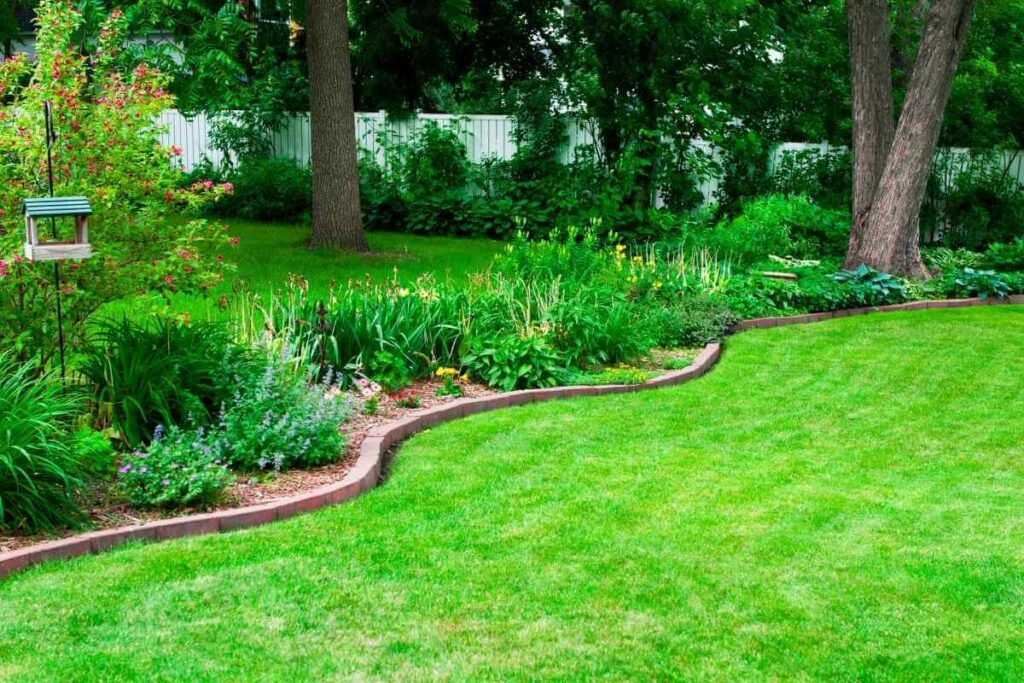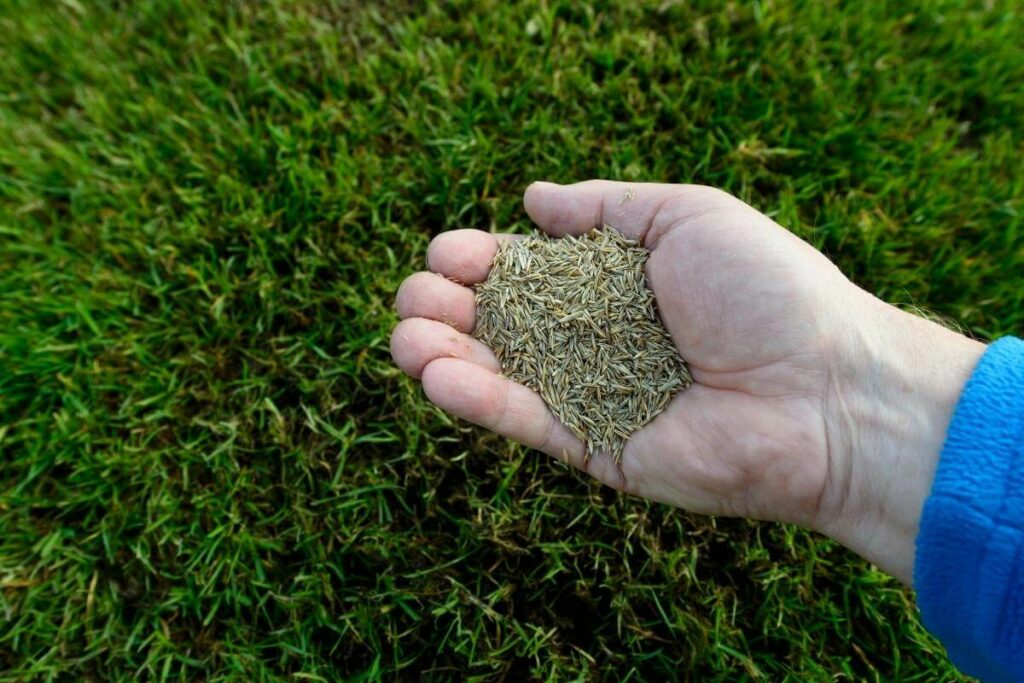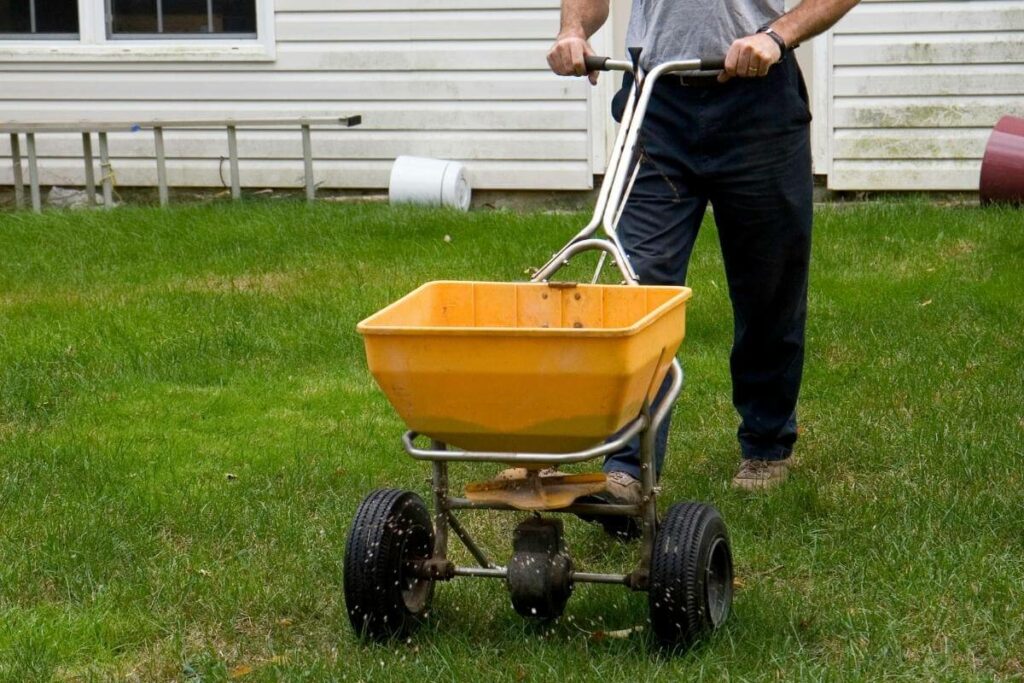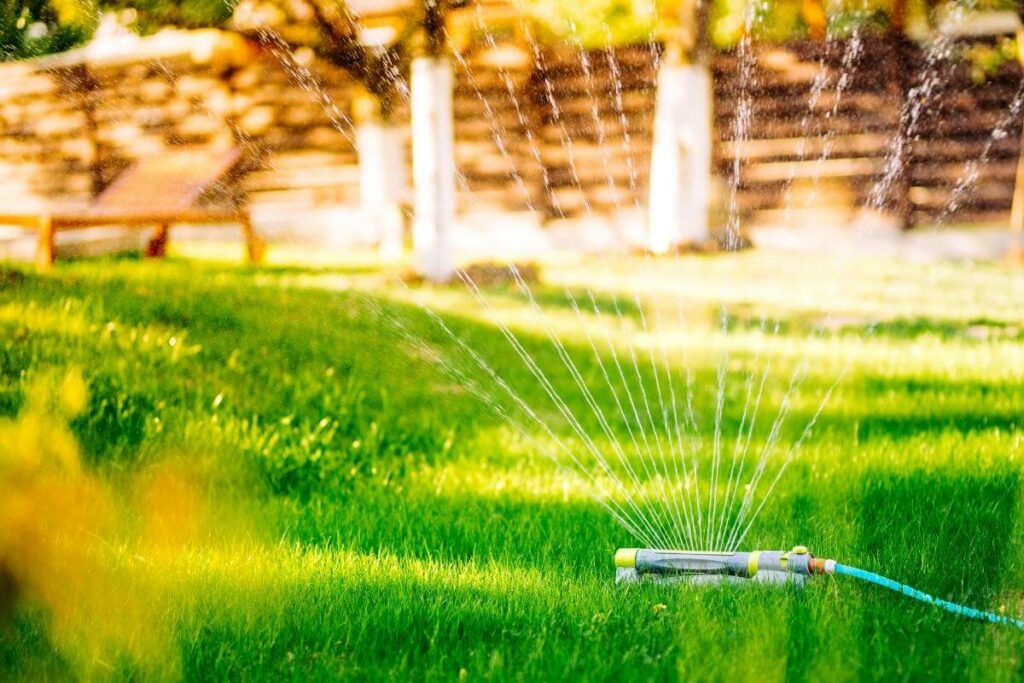Ironically unique, Grass is one of the most ubiquitous and resilient plants on the planet.
Growing reactively faster, in response to a good mowing or even lengthy periods of shade, it is no wonder this robust plant has been around thirty million years longer than humans have.
Grasses exist in a vast variety of over ten thousand different species, worldwide.

From common lawn grasses like Ryegrass and Fescue, to the tallest grass on Earth, that grows as tall as trees: Bamboo – we see a multitude of these various forms in our everyday lives.
You Will Learn: Here, we will explore the growth of the most common grass of all: lawn grasses; along with how their growth is affected by both internal and external factors, and tips for how you can boost the growth of grass and keep your lawn healthy.
Resilient Rootage
Belonging to the family Poaceae, lawn grasses are low-growing plants which sustain and anchor themselves by forming a dense, interconnected, subterranean web of roots.
This underground network is so sturdy that it even secures the soil in which it grows.
Like all grasses, lawn grass grows by both day and night and requires plenty of light, good hydration, and specified fertilizer – rich in phosphorus, potassium, and nitrogen (N-P-K) – in order to keep it healthy and its color vibrant.
The Uniqueness of Grass Growth
Generally, all plants grow to reach the light of the Sun, in order to feed and survive, and so they grow from their peripheries in order to photosynthesise more effectively and efficiently.

Grass, on the other hand, grows predominantly from its crown, which is situated at the base of the plant, level with the soil.
That being said, there is a small amount of growth at the leaf, too.
Natural Reproductive Capability
Similar to a plethora of plant life, grasses produce rhizomes – a subterranean stem growth which allows the plant to reproduce and spread naturally.
Baby shoots are known as ‘tillers’, and these are seed-producing, providing many grasses with the ability to be self-sustaining.
Each seed sprouts a number of blades and there are even species known to fill in the gaps of a lawn, by spreading their own seed without human intervention.
These include species known as Rhizome Grass and Stolon Grass.
Grass Growth by Night
A cornucopia of plant life grows at night-time and many, like grass, can actually grow much faster during the late evening and early morning.
Grass, however, stores energy by day and uses most of it during the night hours.
Considered, by some, to be nocturnal, grass will have a growth spurt in the early hours of the morning and releases most of its energy and oxygen around Dawn.
Sowing a New Lawn

Naturally, for most plant life, the more sunlight they get then the better they grow. Grasses are no exception to this.
Sowing in the early Autumn (around September time) gives the grass sufficient time to anchor its roots before Spring.
The ground should still be around 10 degrees Celsius and needs to be sufficiently moist. Roots also grow and settle much more efficiently through the Winter season.
That being said, you can also plant around the middle of Spring, but this will encourage early flowering and the roots will be less secure.
Seed germination can take any length of time from one to three weeks, depending on the specific type of grass.
Keep In Mind: These timings vary from species to species and can differ depending on the time of year. It will then be at least another two to three weeks before you can mow.
Growing Grass from Seed
This can be very easily completed, by hand or seed spreader, should you wish to grow your own lawn from scratch.

Considered to be much cheaper than Turf, growing new lawn from seed can also be hugely rewarding as with nurturing any plant:
- Having dug over the existing soil, to at least twenty centimetres, clear any weeds and place a layer of freshly fertilised topsoil on the surface (for best results).
- After leveling the area using a rake, use some small wooden pegs and some string to separate the area into square meters. This will help you to distribute the seeds more evenly and you can attach small strips of tinfoil to the string, in order to deter birds which are renowned for their appetites for seeds.
- It is recommended that you scatter no more than around fifty grams of seed per square meter of soil and use a rake, lightly over the surface, to embed the seeds around a centimetre deep. Avoid literally overseeding. This can create an environment so densely competitive that the grass will strangle itself and struggle to both feed and grow properly.
- Finally, using your feet to lightly stamp (or a roller), you need to then compress the top layer of soil in order to pack it down and compress the surface, to secure the seeds within.
Overseeding or Reseeding
This is the process in which fresh seeds are sown into existing lawns, usually to revitalise them.

Having said that, various reasons exist which encourage ‘overseeding’ or ‘reseeding’ a lawn.
Some get too much sunlight and/or too little water and become patchy as a result.
Others are used and abused for sports events and various types of festivals and some, like us all, simply get old and tired, showing signs of stress.
People also do this to create a more densely packed growth which is also spongier underfoot – helping to resist clambering, avaricious feet, producing a more resilient, reproductive graze or preparing for the winds of Winter, as well as its frosts, and its snowfall.
Some simply desire a greener, more picturesquely mowed scene in a garden or on a green. Either way, use around thirty-five grams of seed per square meter of soil.
Works Well: It is also best to scar the surface with a rake, prior to scattering seeds, so that they can properly bond with the soil. Rake once more, afterwards and compact down by foot or roller.
Maintaining a Lush Green Lawn
Water your lawn thoroughly, when there is little to no rainfall, manually or using a sprinkler system – particularly with larger areas.

You should obviously avoid flooding but hydration needs to be increased in especially warm summers.
Fertilize, all year round, applying an appropriate (N-P-K) product in order to keep your lawn a lush green throughout the Spring and Summer, and to build a resistance to both frost and disease, throughout the Autumn and Winter months.
There are, however, slow-release products available which will reduce the number of times that this should be carried out.
Regular mowing is also advisable and is best when the grass grows over five centimetres.
Conclusion
It may seem crazy to ask ‘ How and when does grass grow ‘ but as you can see from the information above it’s not as straightforward as it may seem.
Types of grass, seasons and maintenance can cause the growth rate to speed up or slow down.
But at least you now have a good idea and maybe some suggestions to help keep your lawn growing perfectly.


